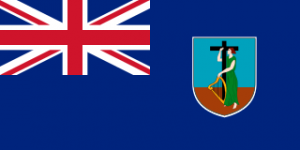Sugar and the blue-eyed slave
Published in Blogging Irish History, Uncategorized RTE Radio’s ‘Documentary on One’ slot recently broadcast ‘Sugar and the Blue-Eyed Slave’; Joe Kearney’s exploration of the strong Irish connection with the Carribbean island of Montserrat, famously devastated by a volcanic eruption in the 1990s. Joe Kearney first heard of the Irish link to the island from Philly Lynch, a Kilkenny philatelist, who showed him a Montserrat postage stamp from the 1900s with a tiny figure of a white girl, dressed in a green ‘slave-shift’ and looking sadly into the distance at Ireland. What did it mean?
RTE Radio’s ‘Documentary on One’ slot recently broadcast ‘Sugar and the Blue-Eyed Slave’; Joe Kearney’s exploration of the strong Irish connection with the Carribbean island of Montserrat, famously devastated by a volcanic eruption in the 1990s. Joe Kearney first heard of the Irish link to the island from Philly Lynch, a Kilkenny philatelist, who showed him a Montserrat postage stamp from the 1900s with a tiny figure of a white girl, dressed in a green ‘slave-shift’ and looking sadly into the distance at Ireland. What did it mean?
The first Irish arrived in Montserrat in 1632. Kearney visited Montserrat early this year, learning of the full horrors of slavery on the island. It seems that Montserrat was different to how other islands in the Carribbean evolved. It had small Irish farmers, who were previously indentured servants and who had received their freedom on the other islands. They subsequently moved to Montserrat growing tobacco, and later sugar. Slave labour was need for the mass-production of the latter, and so the Irish became slave owners: a fact that some Irish people might find uncomfortable today, not least because Kearney did not shy away from revealing its true horrors. The influence of the Irish permeated the island in various ways: many of the islanders were given Irish names by their ancestors’ Irish slave owners, and at least one visiting captain centuries ago was surprised to find that some of the black islanders spoke Irish. Even today St Patrick’s Day is celebrated on the island.
The stamp that piqued Kearney’s curiosity does symbolise Montserrat’s strong past connection with Ireland, and though its purpose on the stamp may be viewed nowadays as being for tourism, I think, over a hundred years ago – 70 years after slavery ended there – it represented a deeper shared history, albeit a conflicted one.
http://www.rte.ie/radio1/doconone/documentary-sugar-blue-eyed-slave-montserrat-slaves.html
Originally from Bere Island but now based in Cork City, Mary Sullivan has a particular interest in the history of Irish emigration to the Americas.

















Superb, what a webpage it is! This blog gives valuable facts to us, keep it up.
Pretty! This has been an extremely wonderful post. Thanks for
supplying this info.
Very good info. Lucky me I found your website
by chance (stumbleupon). I’ve saved as a favorite for later!